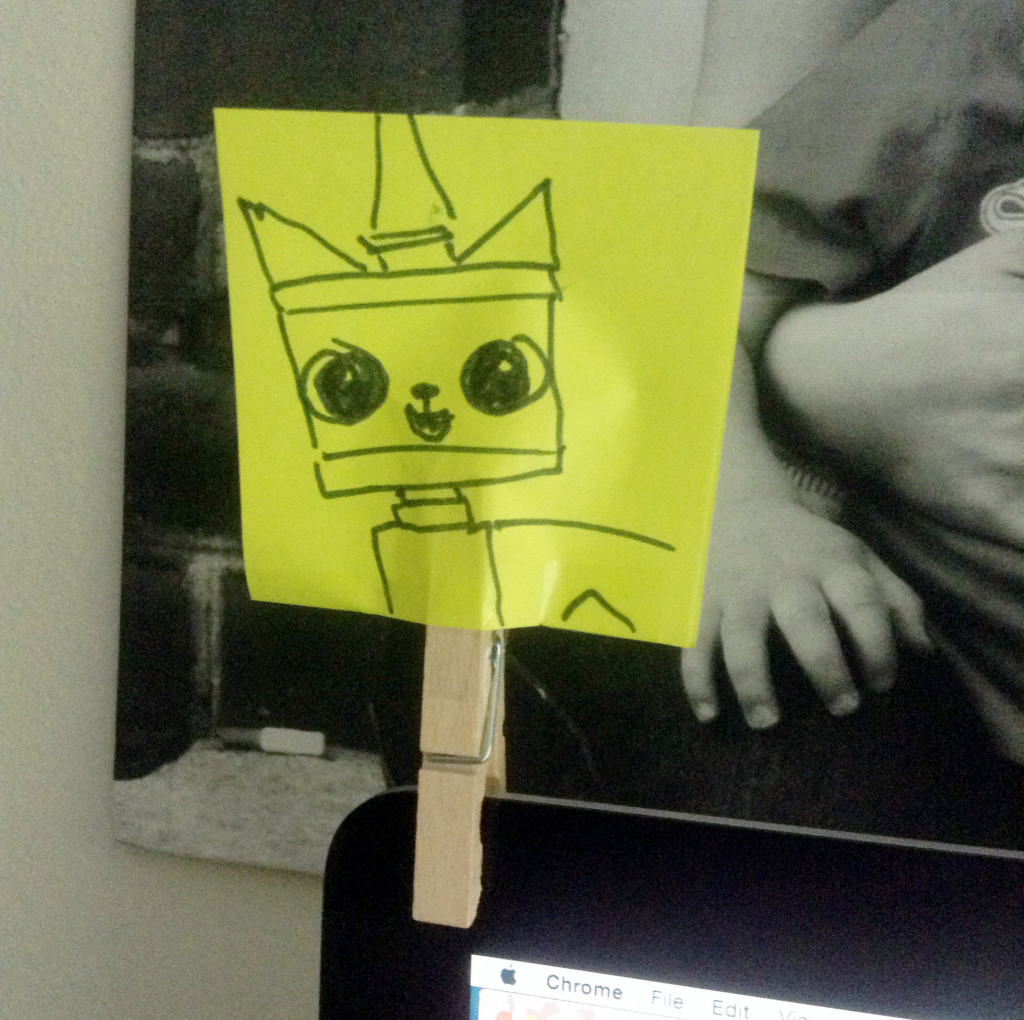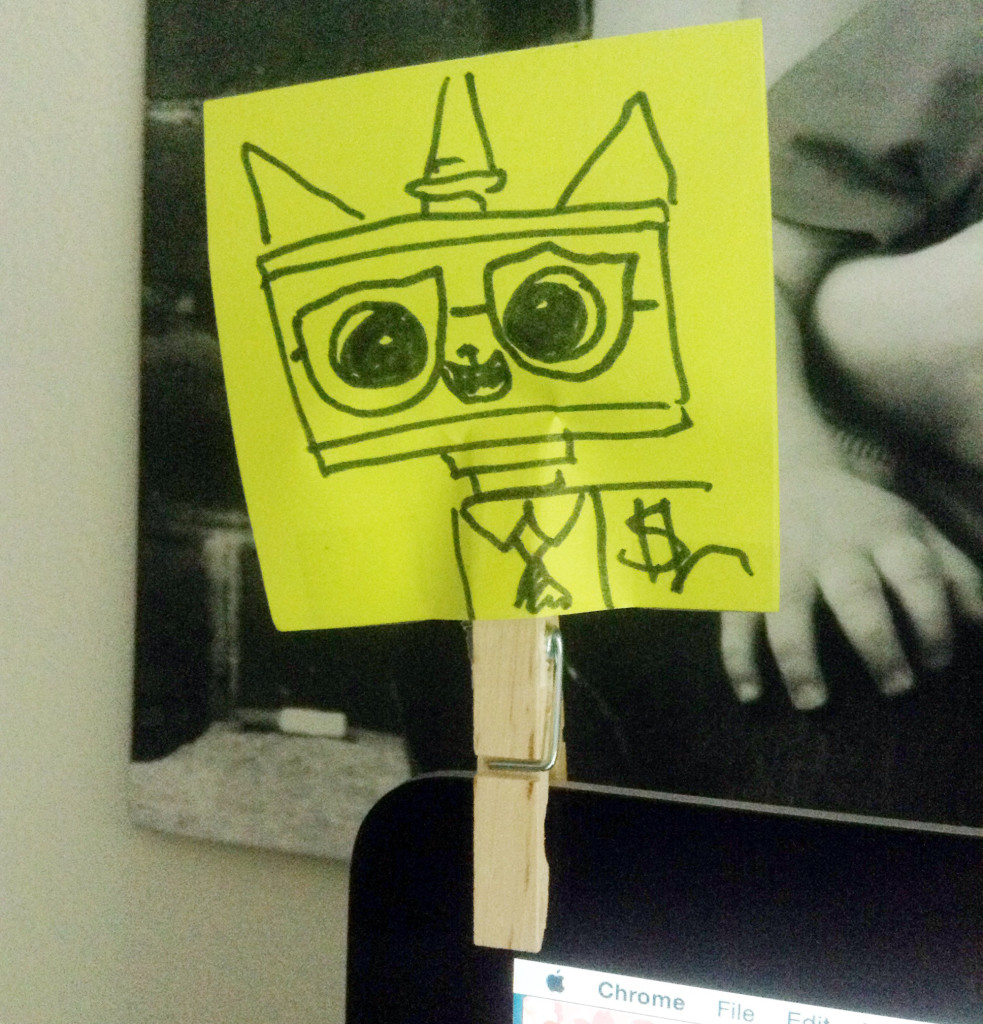
Peeing alone is kind of the holy grail of mothering small children. Somehow the same child who takes 45 minutes to eat (read: mush her chubby baby-fingers into) a single cheese stick can edge with lightning speed through the closing bathroom door should you try to escape to the loo unaccompanied.
There was a moment several years ago when, scrolling through Pinterest, I saw a poster that read:
WE USED TO
WANT IT ALL
NOW WE JUST WANT
TO PEE ALONE
My heart leapt up and did a double roundhouse kick to my ribs and cried, “YES! YES! I WANT THAT!”
And guess what? Are you even going to believe me…?
I have it.
I have a toddler, a preschooler, and an elementary schooler. And I can (and usually do) pee alone. And it is just as amazing as it sounds.
You know what else I can do? I can:
- finish a meal without getting up to get three small people seconds,
- have some time alone when I am ticked off or tired,
- have some time in a noisy car when the kids do not speak directly to me, and
- use the computer while my kids are awake without being repeatedly interrupted.
Do you want to have those things too?! Read on, my friend!
Kids (and Moms!) Thrive With Boundaries
When I go to the park with my kids, I almost always choose the same one. It isn’t the closest. It doesn’t have the biggest playground or the best shady spots to talk to other moms. It is the one with a wide area for play surrounded by a broad chain link fence.
The boundary of that fence gives my children more freedom to roam on their own. It gives me peace of mind because I know it keeps them within healthy parameters. We both benefit, because I know they can clearly see their limits, so I can give them more opportunity to be independent.
Boundaries in our relationships are just like that fence.
Creating space for yourself–and teaching your children how to respect that space–shows your children how healthy relationships work. It prepares them to understand the stricter boundaries they might have in a classroom setting. It also gives them the confidence and knowledge to understand that they can create boundaries for themselves with their peers.
AND it allows you, you sweet, sacrificing, human-jungle-gym, to pee alone if you want to.
Speak Their Language
One of the quickest ways to help children understand your need for boundaries is to make a parallel to their experiences.
When I am super cranky and need a break from the chaos I don’t shout, “Curse you, you meddling kids!!!” à la Scooby Doo, or rant about the dinner I’ve burnt. Instead I say, “Mommy is feeling crabby. I have to have a time-out until I am ready to speak nicely.”
Kids might not understand missing a work deadline or being late to a parent-teacher conference, but you can bet they understand time-out. (And they think it is kind of amazing that mom can get put there, too.) If they try to talk to you, just reinforce that you’re in time out, and tell them you’ll let them know when its over–or set a timer.
My favorite two ways to use this are:
- Putting myself in time-out in the car when everybody is talking to me at once–I’m not “allowed” to talk back until I feel calm,
- Putting myself in time-out at home and have to sit in another room (near enough to supervise but still not “allowed” to talk and the kiddos aren’t allowed to come in with me)
Use a Visual
Because our computer desk is right next to the breakfast table, there always seem to be inquisitive little faces hovering at our elbows when the hubs and I are working there. For a long time we had no idea how to get work done with kids around.
But after repeatedly explaining to our four-year-old that we needed just 20 minutes to work, Steve came up with the perfect solution. He whipped out two post-its, a Sharpie, and a clothespin, and made a little visual.
On one side is Princess Unikitty (of Lego Movie fame):

On the other side, is Unikitty is dressed up as “Business Kitty”:

Steve then called the kids over and explained the rules:
- If the sign is on Unikitty, you can talk to Mommy or Daddy when they’re at the computer.
- If the sign is on Business Kitty, Mommy or Daddy is working and can’t talk until we turn the sign around.
Now when the two older kids (4 and 6) come in to the kitchen and one of us is working, we routinely hear them announce the kitty status to each other. “Oh, Dad’s on Business Kitty. Let’s come back later.”
Teach Patience
This one is the key to your solo-peeing success, mama. It’s a tough one, but it’s absolutely worth it.
And let’s remember that though you benefit from your children’s learning patience, it is not a selfish thing to teach them! Patience is a healthy, helpful skill for them to learn, and it will serve them well for the rest of their lives. So don’t feel bad for making them wait–making them wait lets them practice patience.
With our toddler, I use a physical cue and the word: “Wait.”
Like this:
- When she tries to go upstairs before I’m ready to go with her, I lift her off the steps and tell her to wait.
- When she tries to flip over before a diaper change is over, I gently hold her still and remind her to wait.
- When she tries to follow me into the bathroom, I move her back and tell her to wait.
When we practice this, she cries at first. She doesn’t want to wait, so she lets me know. But as I am consistent, she begins to understand that after she waits, she will get a payoff. Sometimes she will hang out outside the bathroom door and babble to me, but most often she doesn’t even seem to notice anymore.
With preschool aged and older children, I use a “When-Then.”
- If they ask for more pasta after I’ve sat at the table, I say, “When I’ve finished eating, then I will get you seconds.” (You can also teach them how to get seconds for themselves. Yay!)
- If they ask for help with an inside out shirt while I’m making school lunches, I say, “When I’ve finished packing the sandwiches, then I will help with your button.”
- Or how about, “When I am done in the bathroom, then I will braid your hair.”
I don’t need to braid your hair while I’m in the bathroom!
The “when-then” (which I learned from the parenting book that changed my life) is great because it gives kids a positive answer, but also allows you to finish a task before starting on a new one.
Your Turn!
So that’s it, mama! You, too, can pay a bill without being repeatedly asked to turn the volume up on Sesame Street! (Use a visual!) Have a moment of not responding to a million questions about grasshoppers in the car! (Take a time-out!) Eat your whole dinner without getting someone a fourth napkin! (Use “wait” of a when-then.)
And you don’t even have to feel guilty about it, because you are teaching your child about respect, patience, and personal boundaries!
Moms of small, wonderful, but slightly-intrusive tiny people unite! Tell your friends to tell their friends! Share this with a mom who really needs it and tell her, “You, too, can pee alone!”

haha. Yes to everything on this. Instead of the time out in the car Brooks just says, okay, let’s play. “1-2-3 QUAKER!!!!” and everyone shuts up. They think its so fun to see who will win the silent game. Win-wiiiiin!!!! 😉 One day they’ll look back and realize how sneaky we are. And if your child IS outside your door still talking to you peeing, then THAT’S WHAT THE BATHROOM FAN IS FOR! Mine is extra loud. Actually I’ve used the loo by myself all parenting, and my kids expect it I guess. Love the post Jamie. Great stuff.
Bless your heart, Melissa. The bathroom fan is genius! It’s like the grown-up version of covering your ears and shouting, “I CAN’T HEAR YOU! I CAN’T HEEEAR YOUUUU!” Personal space for the win. 😉
Love this. I do the “when-then” with Austin all the time but didn’t even think about helping Sean by using the word “wait.” He is seriously the most impatient kid ever. I’m going to try this. Also– when you’re a famous parenting blogger don’t forget me! xoxo
It seriously helps! And I will never ever forget you! xo
You are a fabulous writer and mother! I can’t think of a better platform for you to share your gifts and talents! I love the Unikitty signs, I need a few of those posted around here! Our toddler used to come into the kitchen while we were making dinner and hang on our legs screaming, or wedge himself between our legs and the cabinets and push us away from the counter. It was unbearable! By the time dinner was served I didn’t even feel like eating anymore! We finally put a chair in the entry way of the kitchen and trained him to know that when the chair is there he and his older sister are not allowed in the kitchen. At first he would throw tantrums, try to move the chair, or just come in anyway (all resulting in “quiet time”). Now he just goes off to play until the chair is removed. Peaceful dinner making is possible. 🙂 I love your fence analogy! Hooray for raising children who understand and respect boundaries!
These tips are on point! Privacy is an important principle in our house, so because we have taught that I usually get to pee alone, but getting quiet time in the car or uninterrupted computer time are still on my wish-list. I think giving yourself time-outs is so genius and same with your post-it notes for computer time… I’m totes stealing and will let you know how it goes!
Let me know! I’m glad you figured out privacy for yourself early on. It is so much easier to teach anything when they are little!